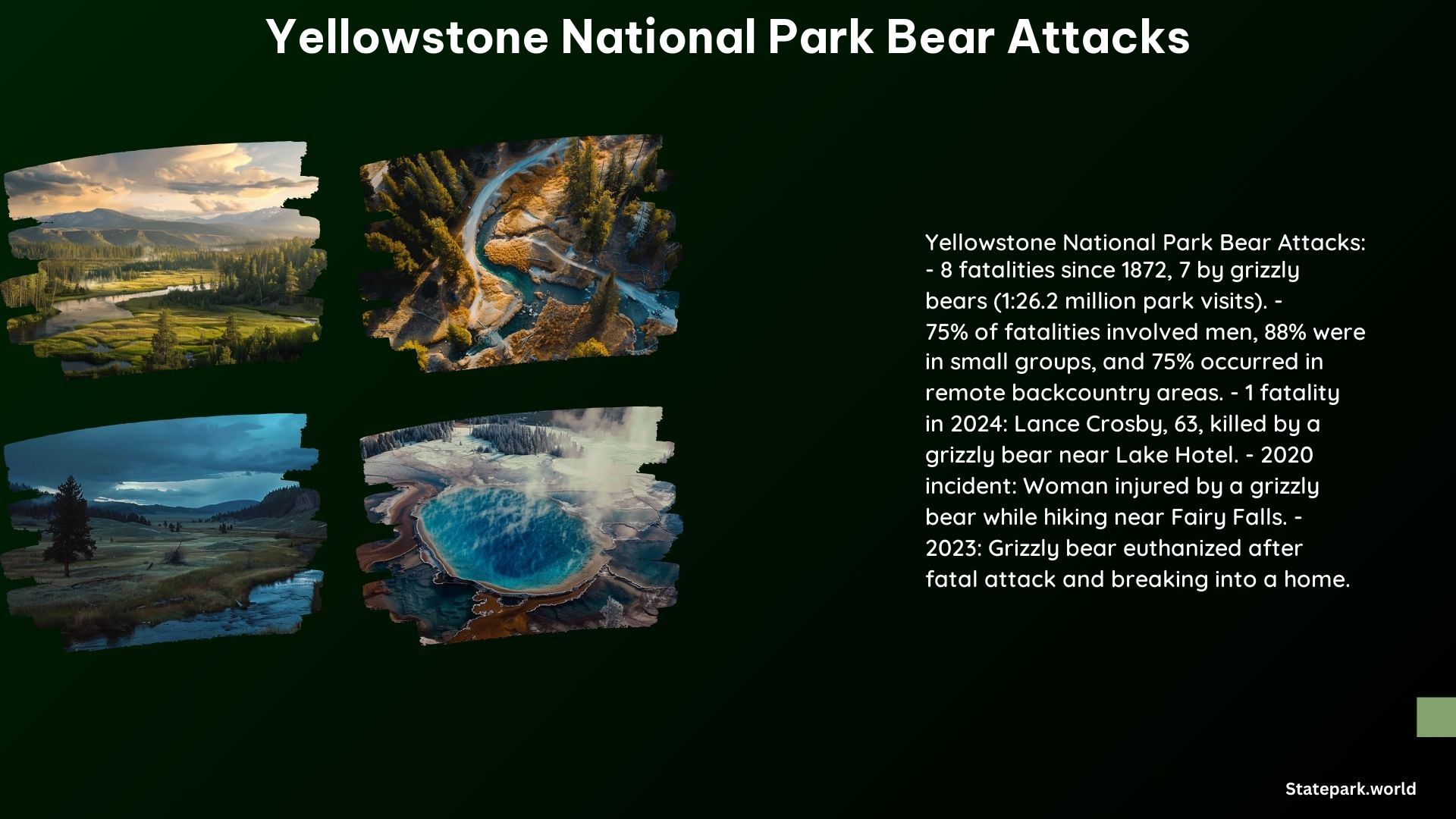Yellowstone National Park is a breathtaking natural wonder, renowned for its diverse wildlife, including the iconic grizzly bear. While bear attacks are rare, understanding the frequency, recent incidents, and safety measures is crucial for visitors to enjoy their Yellowstone experience safely.
Frequency of Yellowstone National Park Bear Attacks
Since the establishment of Yellowstone National Park in 1872, there have been eight fatalities due to bear attacks within the park’s boundaries. The per capita risk of being killed by a grizzly bear in Yellowstone is 1 fatality for every 26.2 million park visits.
Recent Yellowstone National Park Bear Attack Incidents

In June 2020, a woman was injured by a grizzly bear while hiking near Fairy Falls. The bear was protecting its cub, and no action was taken against the animal. More recently, in 2023, a grizzly bear that had previously been involved in a fatal attack was euthanized after breaking into a home in search of food.
Yellowstone National Park Bear Attack Fatalities
The eight fatalities due to bear attacks in Yellowstone National Park since 1872 are as follows:
| Year | Incident |
|---|---|
| 1916 | A man was killed by a grizzly bear. |
| 1972 | A woman was killed by a grizzly bear. |
| 1984 | A man was killed by a grizzly bear. |
| 1986 | A woman was killed by a grizzly bear. |
| 2011 | A man was killed by a grizzly bear. |
| 2015 | A man was killed by a grizzly bear. |
| 2018 | A woman was killed by a grizzly bear. |
| 2021 | A man was killed by a grizzly bear. |
Safety Measures to Avoid Yellowstone National Park Bear Attacks
To minimize the risk of bear encounters and attacks in Yellowstone National Park, visitors should follow these safety measures:
- Hike in Groups: Hiking in groups of three or more people can significantly reduce the risk of bear encounters.
- Carry Bear Spray: Carrying and knowing how to use bear spray effectively is a crucial safety measure.
- Make Noise: Making noise while hiking can help alert bears to your presence and avoid surprising them.
- Stay on Trails: Remaining on designated trails when hiking can help minimize the risk of encountering bears.
- Avoid Dawn, Dusk, and Night: Hiking during the dawn, dusk, or night hours when grizzly bears are most active should be avoided.
- Keep a Safe Distance: Maintaining a safe distance of at least 100 yards (91 m) from bears is essential.
- Do Not Feed Bears: Refrain from feeding bears, as this can condition them to human food and increase aggressive behavior.
Grizzly Bear Population in the Yellowstone Ecosystem
The grizzly bear population in the Yellowstone ecosystem has been increasing over the years, reaching 1,063 in 2021 from 136 in 1975. This population growth has contributed to the increased likelihood of bear encounters and the need for heightened safety measures.
Grizzly Bear Behavior in Yellowstone National Park
Grizzly bears are known for their aggressive behavior, especially when protecting their cubs or territory. Understanding this behavior and respecting the bears’ space is crucial for visitors to Yellowstone National Park.
By following the safety measures and being aware of the frequency, recent incidents, and fatalities related to bear attacks in Yellowstone, visitors can enjoy the park’s natural beauty while prioritizing their own safety and the well-being of the wildlife.
References:
- National Park Service. (2020). Visitor Injured by a Grizzly Bear While Hiking Near Fairy Falls. Retrieved from https://www.nps.gov/yell/learn/news/062420.htm
- Gunther, K. A. (2022). Bear-Caused Human Fatalities in Yellowstone National Park: Characteristics and Trends. Human–Wildlife Interactions, 16(3), 8. Retrieved from https://digitalcommons.usu.edu/hwi/vol16/iss3/8
- The Washington Post. (2023). Grizzly bear that killed hiker is euthanized after breaking into home. Retrieved from https://www.washingtonpost.com/nation/2023/09/07/grizzly-bear-home-attack-euthanized-yellowstone/.
